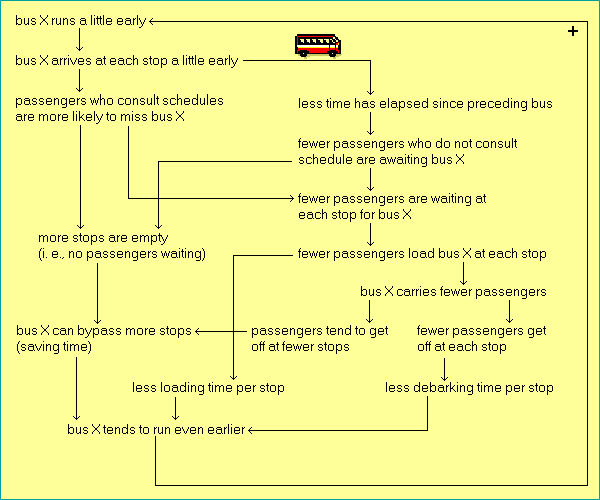Suppose, for example, that bus X is running a little earlier than usual, because of light traffic conditions or other "random" factors. The graph at the bottom of this page (scroll as needed) illustrates the effects of this fluctuation on the number of passengers that the bus must process at each stop, on the number of stops it can bypass entirely, and hence on the further progress of the bus through its route. This graph is not difficult to grasp, and the student should analyze it arrow by arrow before proceeding. ![]()
